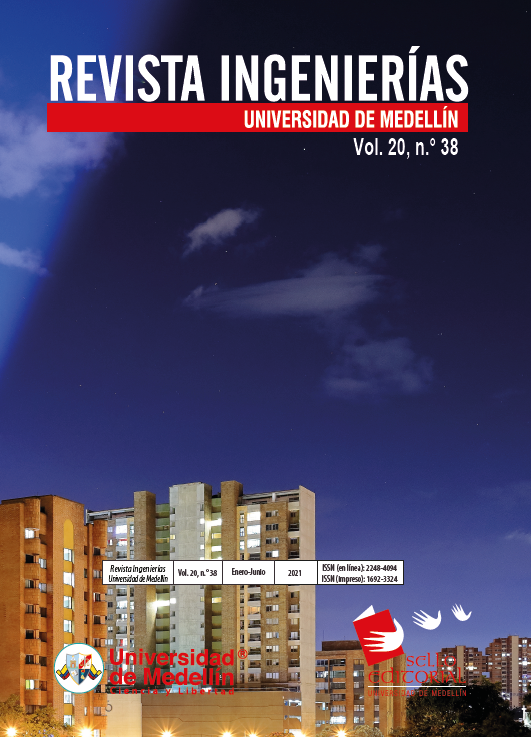Extraction of Student Interaction Data from an Open edX Platform
Main Article Content
Abstract
The Massive Open Online Courses (MOOC) are courses available to the general public without restrictions that are offered to hundreds or thousands of students and in recent years have been presented as a revolution in online education. They are presented as an alternative to the great demand in higher education for the characteristic of being open and massive because they allow access to education to a huge number of students. They have become an ideal environment for data collection and through the application of learning analytics techniques they have allowed a better understanding of how students learn. However, access to the data from thecurrent open-source MOOC platforms is limited and often difficult to collect and process. This paper presents a proposal for collecting and processing the data from students’ interaction with the Open edX platform through Scripts and a Collector based on Java code.
Article Details
References
[1] S. Downes, Connectivism and ConnectiveKnowledge: essaysonmeaning and learningnetworks. Canada: NationalResearch Council, 2012.
[2] X. Chen, D. Barnett, and C. Stephens, 'Fadorfuture: The advantages and challenges of massive open online courses (MOOCs),' Research to Practice Conference in Adult and HigherEducation, Sep. 2014.
[3] M. Gea, R. Montes, B. Rojas, and R. Bergaz, 'Comunidades Activas de Aprendizaje: hacia la Formación Abierta en las Universidades,' Vaer-Rita, vol. 2, pp. 3, 11, Mar. 2014.
[4] J. Kennedy, 'Characteristics of Massive Open Online Courses (MOOCs): A ResearchReview, 2009-2012,' Journal of Interactive Online Learning, vol. 13, 1, pp. 1-16, 2014.
[5] A. McAuley, B. Stewart, G. Siemens, and D. Cormier, 'The MOOC Model for Digital Practice,' University of Prince Edward Island, 2010.
[6] C. M. M. García, 'Diseño e implementación de cursos abiertos masivos en línea (MOOC): expectativas y consideraciones prácticas,' RED. Revista de Educación a Distancia, n.° 39, pp. 58-77, 2013. http://www.redalyc.org/articulo.oa?id=54729539004.
[7] E. V. Cano and E. L. Meneses, 'Los MOOC y la educación superior: la expansión del conocimiento,' Profesorado. Revista de Currículum y Formación de Profesorado, 2014. http://www.redalyc.org/articulo.oa?id=56730662001.
[8] 'Observatorio MOOCs UC,' 2017. [Online]. Available: http://observatoriomoocs.sitios.ing. uc.cl/. [Accessed: 15-Sep-2018].
[9] U.-M. O’Reilly and K. Veeramachaneni, 'Technology for Mining the Big Data of MOOCs,' Research & Practice in Assessment, vol. 9, pp. 29-37, 2014.
[10] J. J. Maldonado, R. Palta, J. Vázquez, J. L. Bermeo, M. Pérez-Sanagustín, and J. Munoz-Gama, 'Exploring differences in how learners navigate in MOOCs based on self-regulated learning and learning styles: A process mining approach,' in 2016 XLII Latin American Computing Conference (CLEI), 2016, pp. 1-12.
[11] P. Mukala, J. Buijs, M. Leemans, and W. Aalst, 'Exploring Students’ Learning Behaviour in MOOCs using Process Mining Techniques,' Department of Mathematics and Computer Science, University of Technology, Eindhoven, The Netherlands, 2015.
[12] H. Qu and Q. Chen, 'Visual Analytics for MOOC Data,' IEEE Computer Graphics and Applications, vol. 35, 6, pp. 69-75, Dec-2015.
[13] C. D. Kloos et al., 'Experiences of running MOOCs and SPOCs at UC3M,' presented at the 2014 IEEE Global Engineering Education Conference (Educon), 2014, pp. 884-891.
[14] A. Fox, 'From MOOCs to SPOCs,' Commun. ACM, vol. 56, n.° 12, pp. 38-40, Dec. 2013.
[15] W. Guo, 'From SPOC to MPOC - The Effective Practice of Peking University Online Teacher Training,' in 2014 International Conference of Educational Innovation through Technology (EITT), 2014, pp. 258-264.
[16] A. M. Mutawa, 'It is time to MOOC and SPOC in the Gulf Region,' Educ. Inf. Technol, pp.1-21, 2016.
[17] J. Cabero, C. Llorente, and A. Vázquez, 'MOOC`s typologies: Design and educational implications,' Profesorado, vol. 18, pp. 13-26, 2014.
[18] K. Chorianopoulos and M. Giannakos, 'Merging learner performance with browsing behavior in video lectures,' WAVE 2013 workshop LAK´13, 2013.
[19] C. D. Kloos, P. Muñoz-Merino, and M. Muñoz-Organero, 'Extendiendo Google Course Builder mediante Proyectos Realistas en un Curso de Master,' Universidad Carlos III de Madrid, 2014.
[20] D. Jaramillo-Morillo, M. S. Sarasty, G. R. González, and M. Pérez-Sanagustín, 'Follow-Up of Learning Activities in Open edX: A Case Study at theUniversity of Cauca,' in Digital Education: Out to the World and Back to the Campus, 2017, pp. 217-222.
[21] M. Solarte, G. A. Ramírez, and D. A. Jaramillo, 'Access habits and assessment results in massive online courses with academic value.' Revista Ingeniería e Innovación, vol. 5, n.° 1, May 2017.





